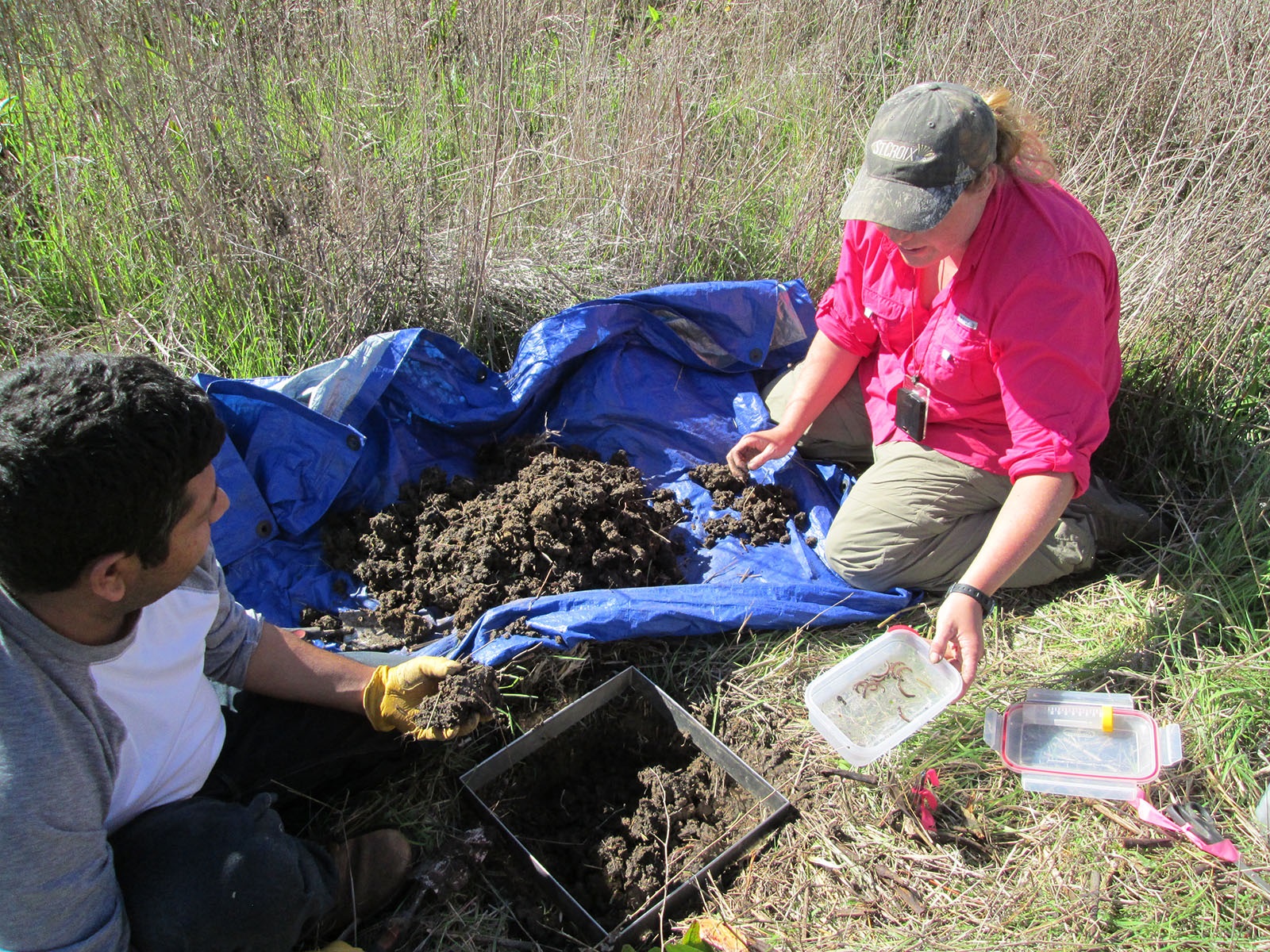
Agricultural News
Latest Research Leads OSU Scholars to Find Earthworms Can be Invasive and Damaging to Soil
Tue, 04 Oct 2016 16:19:49 CDT
 They are everywhere. People use them as fishing bait. Others toss them in their gardens to help aerate the soil. They also can be used in compost piles.
They are everywhere. People use them as fishing bait. Others toss them in their gardens to help aerate the soil. They also can be used in compost piles.
They are earthworms and with them come many misconceptions. The truth of the matter is sometimes earthworms can be invasive and cause significant environmental damage.
Researchers within Oklahoma State University's Department of Natural Resource Ecology and Management recently dug into this issue through a grant from the United States Department of Defense. The funding led Shishir Paudel, NREM post-doctoral associate, to a U.S. Navy-owned island 80 miles off the coast of California.
San Clemente Island is a remote, windswept, rugged island off the coast of southern California, with numerous unique and endangered plant and animal species, and until recently, no earthworms. When the Navy did find earthworms on the only ship-to-shore, live-firing range in the country, they became concerned about potential harmful effects to endangered species, and Paudel and his colleagues also took interest.
How did the nonnative worms get there, how many are there and are they going to be a problem?
"Based on our research, we're still not certain how the worms got there, but we think they were likely introduced in 2008, when topsoil was brought from the mainland to pave a major road," Paudel said. "This explanation is support by our observation that nearly all earthworms are close to the paved road."
The team was lead by Scott Loss, NREM assistant professor of global change ecology and management, and included collaboration from Gail Wilson, NREM Sarkeys Endowed professor, and researchers from the University of Southern California. The research, which began in 2014, has been recently published in the journal "Diversity and Distributions."
Paudel did a random sample of the island, digging 672 holes, all of which were 33 cm by 33 cm square and 30 cm deep. He found anywhere from 0 to more than a dozen worms in each hole.
The worms were taken back to Oklahoma to be identified, and all were found to be native to either Eurasia or South America.
Finding worms where they are not supposed to be does not sound like a big deal. But, much research has been done on invasive earthworms in forests of the northern United States, areas that were historically earthworm-free due to glaciation.
"Ecologists have learned that Eurasian earthworms drastically change the entire forest ecosystem," said Loss. "Earthworms change the soil, which in turn reduces biodiversity of forest plants. Changes to vegetation can even negatively affect populations of animals, like birds and salamanders living on the forest floor."
On San Clemente Island, the research team found some evidence of harmful impacts to grassland ecosystems. In particular, invasive grasses were more common in areas with invasive earthworms, suggesting that earthworms may be helping invasive plants establish a foothold.
"The worms change the soil and this in turn may impact the relative success of native and nonnative plant species," Paudel said. "Increased dominance of invasive plants could eventually harm San Clemente's endangered species."
Loss and his students also have documented invasive earthworms in Oklahoma soils. Students in his Applied Ecology and Conservation class have found Eurasian and South American earthworms at the OSU Research Range near Stillwater, and Loss has found European and Asian species (such as the Asian "jumping worm") across the state, including near fishing lakes in remote forests of eastern Oklahoma.
The team is hopeful the research in California will open the eyes and minds of those moving dirt for construction purposes without thinking about possible harmful effects to the environment.
Likewise, fishermen in Oklahoma and elsewhere can prevent environmental damage by throwing away unused bait rather than dumping it on the ground. Sometimes there are things in the dirt that should not find themselves in other areas.
Source - Agricultural Communications Services / Oklahoma State University
WebReadyTM Powered by WireReady® NSI
Top Agricultural News
More Headlines...




















